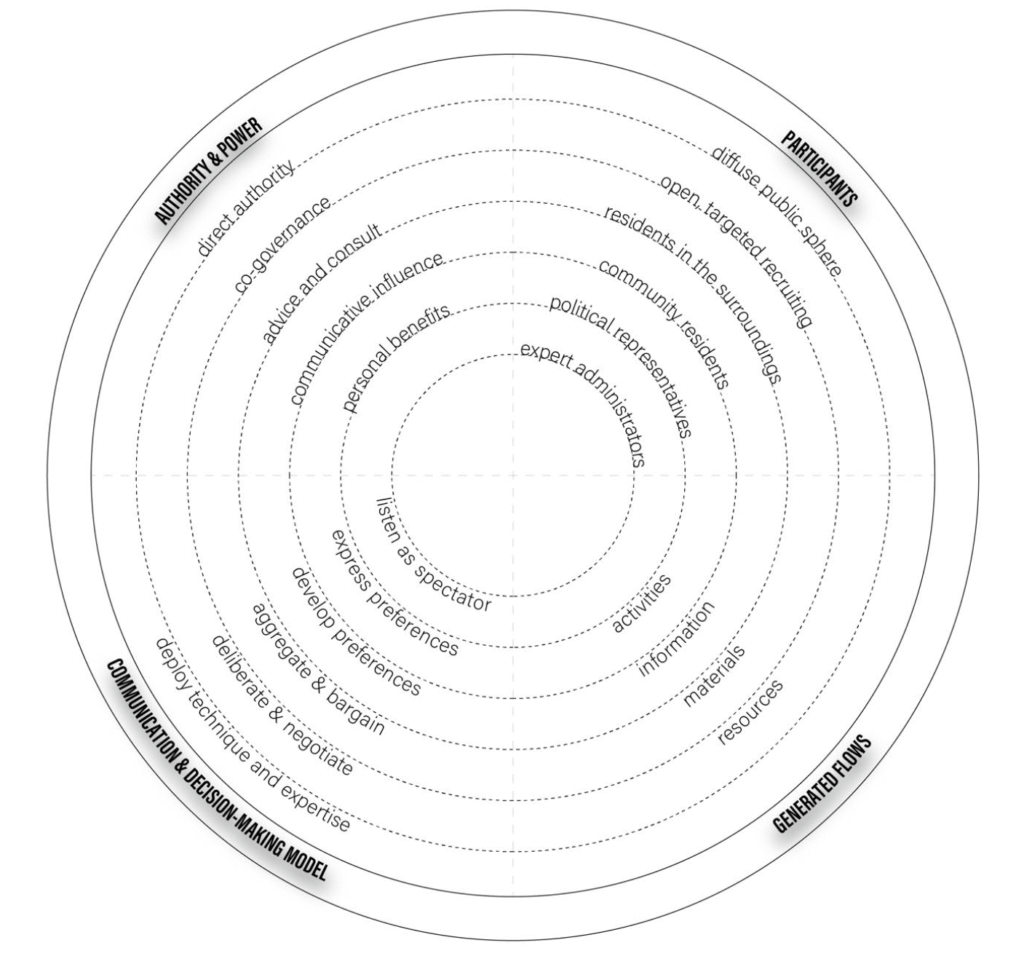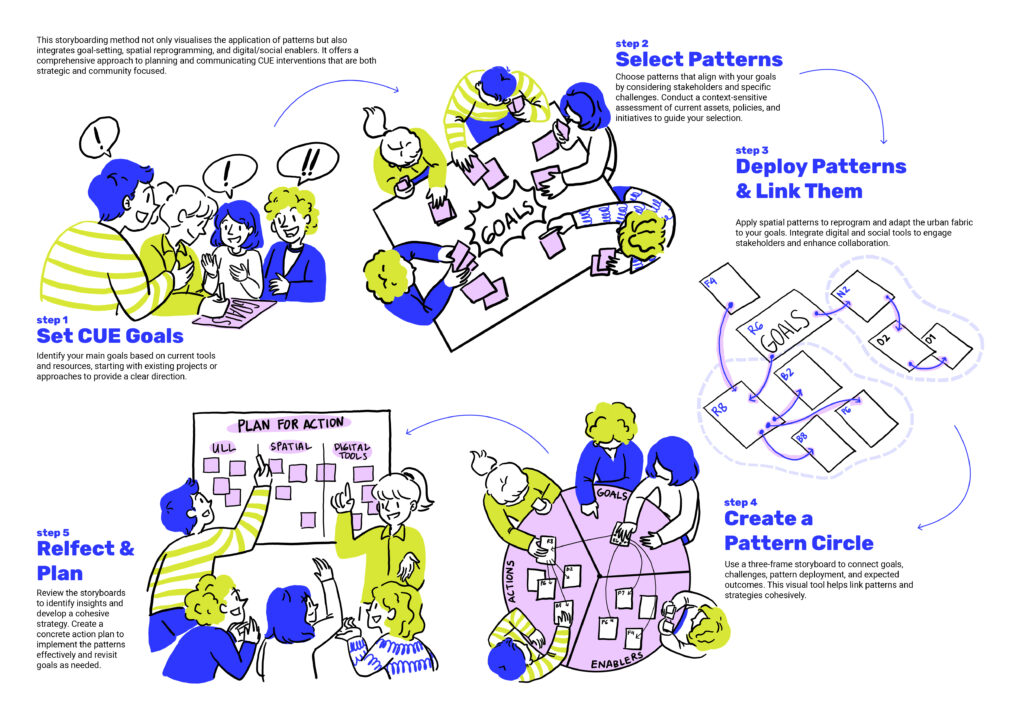Developing a Pattern Language Framework for Phygital Circular Economy Models in Urban Environments
Authors: Cinco Yu, Victor Munoz Sanz
This deliverable details the methodologies and framework developed within the CORPUS project (WP2) for facilitating the understanding, design, and implementation of “phygital” Circular Economy (CE) models within urban environments. Recognizing the need for structured approaches to capture and transfer knowledge across diverse stakeholders, the project adopted and refined a Pattern Language methodology, extending its application to the complex interplay of physical spaces, digital technologies, and community engagement. This report outlines the core methodological advancements and the resulting framework.
The central challenge addressed by CORPUS was the fragmentation of knowledge surrounding CE innovation, particularly concerning the integration of digital solutions within physical contexts. Recognizing that purely academic approaches often fail to translate into practical implementation, the project prioritized a transdisciplinary framework. This involved moving beyond simple interdisciplinary collaboration to actively integrate non-academic stakeholders—urban planners, technology developers, business owners, and community residents—throughout the research process. This participatory approach ensured the resulting Pattern Language framework resonated with practical needs and facilitated knowledge co-creation.

The Inclusive Radar
Putting the four flows of activities, information, materials and resources together we create the Inclusive Radar. To proceed with the evaluation of a project related to CE, it’s important to note the following: This radar can be utilised to assess either a single stage or the entire process of a participatory approach. Alternatively, the radar can be employed in reverse, serving as a pre-determined participatory goal. The radar can be modified with further granularity to align with more refined participatory objectives and methods, as no single participatory method is one-fits-all. When comparing the evaluation of different participation processes, attention must be paid to the projects’ scales and the varying interpretations and meanings of different terms across different contexts, which necessitates more in-depth investigation.
The adopted Pattern Language methodology was significantly adapted to account for the dynamic and emergent nature of “phygital” CE models. Traditional Pattern Languages, often focused on static design solutions, were expanded to accommodate the iterative and adaptive processes inherent in digitally enabled urban environments. A key innovation was the incorporation of “narrative patterns,” which document the lived experiences and practical insights of stakeholders involved in CE initiatives. These narratives provide critical context and illustrate how patterns manifest in real-world settings, bridging the gap between theoretical frameworks and practical application.
The framework’s development involved a three-stage process: identification, articulation, and validation. Identification utilized a mixed-methods approach, combining literature reviews, case study analysis, and participatory workshops. Workshops facilitated by the project team were conducted in diverse urban contexts, leveraging visual mapping exercises and facilitated discussions to uncover recurring patterns of CE implementation. These initial patterns were then articulated into concise, structured narratives describing the context, problem, solution, and consequences of the observed practices.
A critical element of the articulation process was the development of a “typology of phygital connection points.” Recognizing that the integration of physical and digital spaces is not uniform, this typology classifies the various ways in which these realms interact—ranging from simple data visualization overlays on physical infrastructure to complex, sensor-driven feedback loops influencing resource allocation. This categorization provided a more granular understanding of the specific technologies and strategies employed in CE implementations.

Furthermore, the project developed a suite of supporting tools to facilitate the use of the Pattern Language. These included a digital pattern repository with advanced search and filtering capabilities, allowing users to quickly locate patterns relevant to their specific needs. A “Pattern Language Toolkit” was also created, comprising visual mapping templates, facilitation guides, and evaluation metrics to aid in the application of the framework within urban planning and innovation processes. This commitment to usability and accessibility ensures the framework is not merely a theoretical construct but a practical tool for driving change. The resulting framework offers a structured approach to understanding, designing, and implementing CE interventions, fostering a shared language and accelerating the transition towards more sustainable urban futures.

